This homemade applesauce recipe has no added sugar and is super easy to make with just 4 ingredients. Enjoy it as a delicious fall snack or use it in your favorite recipes!
When you have too many apples on hand after apple picking and are looking for a recipe to make, this homemade applesauce is here for you! It’s so easy to make and tastes exponentially better than store-bought applesauce.
You can enjoy it as a healthy fall snack (it’s one of my kids favorite snacks) or keep it on hand for recipes. I use applesauce ALL THE TIME in my recipes like these healthy pumpkin bars, oatmeal raisin cookies, apple cinnamon baked oatmeal and healthy chocolate cupcakes.
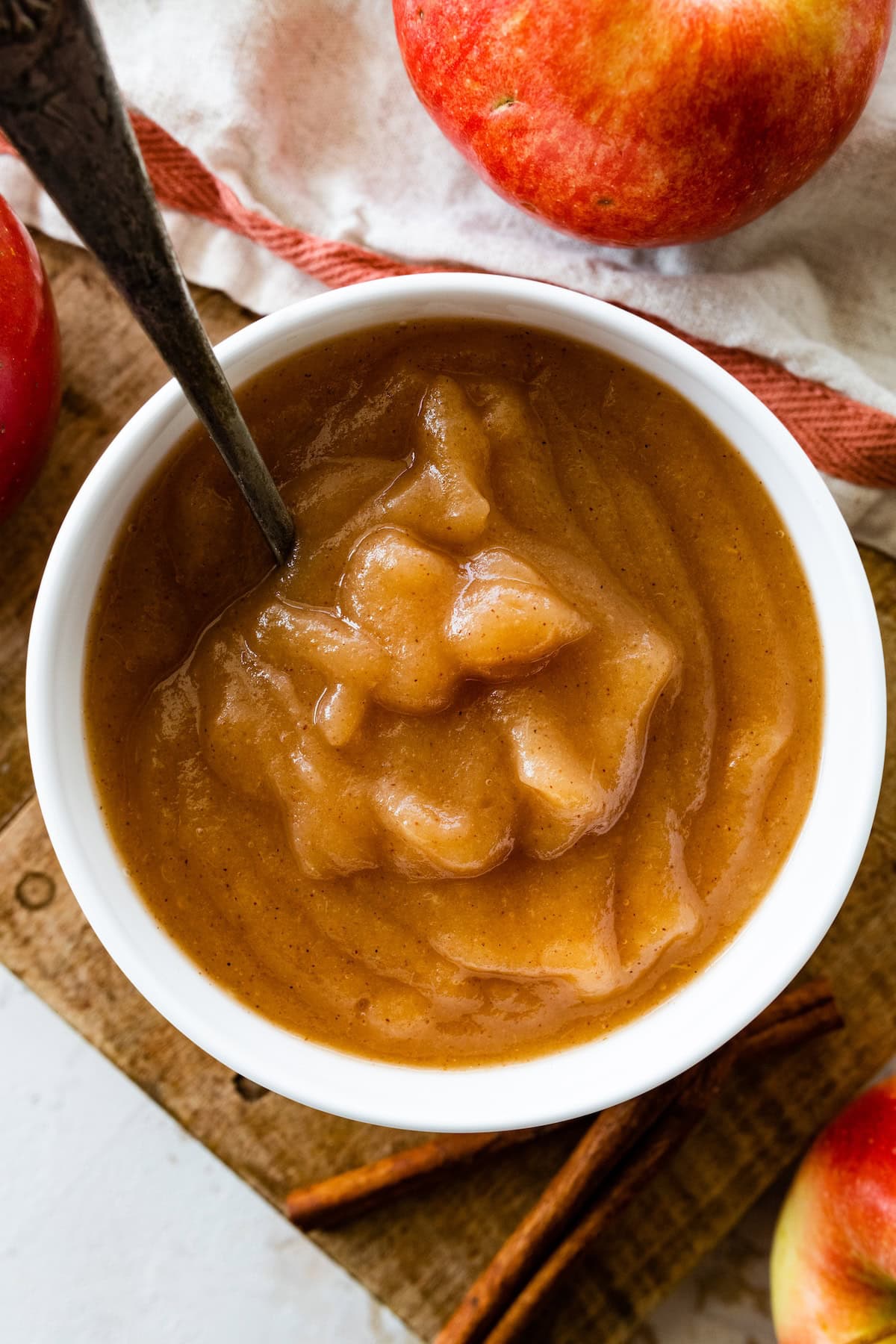
and the Google Privacy Policy and
Terms of Service apply.
Why You’ll Love This Recipe
- Naturally Sweet – This homemade applesauce is naturally sweetened by the apples themselves. No need for added sugar — it’s delicious just as it is!
- Super Simple – With just four ingredients, this recipe is as easy as it gets. You’ll have a batch of fresh, warm applesauce ready in no time.
- Versatile – This applesauce is incredibly versatile. Enjoy it straight from the jar, use it as a topping for oatmeal or pancakes or in your baked goods to keep recipes nice an moist like these healthy vanilla cupcakes.
- Kid-Friendly – Kids of all ages love applesauce and this homemade version is a great kid-friendly snack without any added sugars or preservatives. You can feed it to babies as homemade baby food or pack it in your toddlers school lunch box for a healthy snack.
- Customizable – I love that you can customize how smooth or chunky you want your applesauce and you can play around with flavor variations! I love keeping it plain or adding a dash of cinnamon.
Applesauce Ingredients
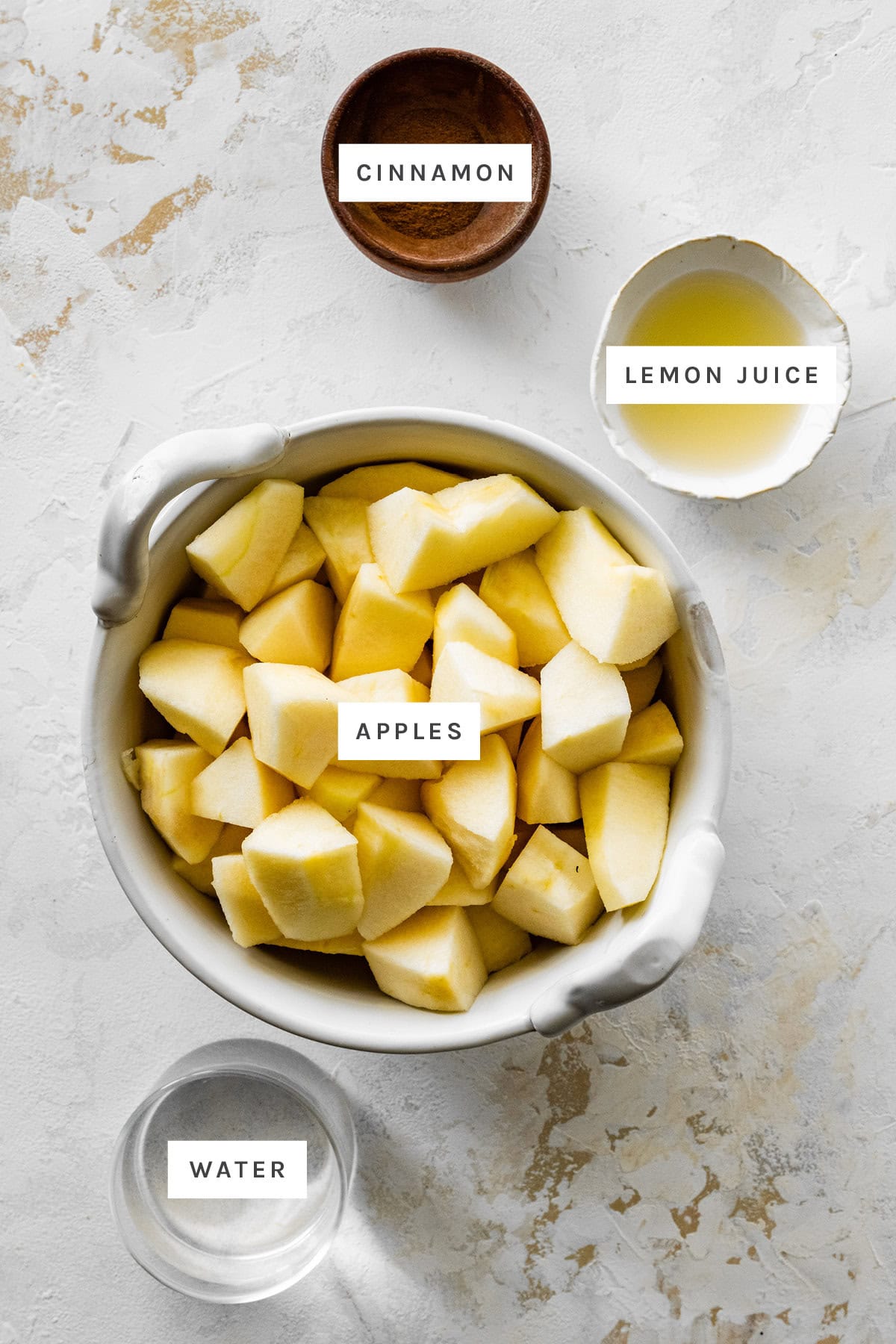
- apples – I recommend choosing a sweet variety like Fuji, Honeycrisp, Gala or Golden Delicious. Or you can do a blend of tart and sweet apples!
- water – what helps the apples steam and soften as they cook.
- lemon juice – a bit of tang to balance the sweetness of the apples! Apple cider vinegar could be used instead.
- cinnamon – ground cinnamon cinnamon is optional but I personally love adding it to my applesauce, especially if I’m just making a batch to enjoy as a snack. Cinnamon + apple = the best combo ever!
Applesauce Variations
Personally, I enjoy keeping things simple by just adding a pinch of cinnamon to my applesauce, but this recipe is customizable with plenty of variations you could try for yourself. Here are some ideas:
- Add vanilla: For a subtle, sweet aroma, add a small splash of vanilla extract to the applesauce after it has cooked. The vanilla pairs well with the natural sweetness of the apples.
- Add spices: Add a warm, cozy flavor by increasing the cinnamon or trying other spices like nutmeg, cloves, or allspice. You can create a spiced applesauce that’s perfect for fall or the holidays.
- Mixed Fruit: Experiment by adding other fruits like pears, peaches or berries to your apples. Pears blend particularly well with apples for a smooth, sweet sauce.
- Sweetened: If you prefer your applesauce a bit sweeter, you can stir in a tablespoon or two of maple syrup, honey or agave nectar after cooking. This is especially nice if you’re using tart apple varieties like Granny Smith, McIntosh or Pink Lady.
- Citrusy: Add a little more zest to your applesauce by including a bit of orange or lime zest along with the lemon juice. It brightens up the flavor beautifully!
How to Make Applesauce
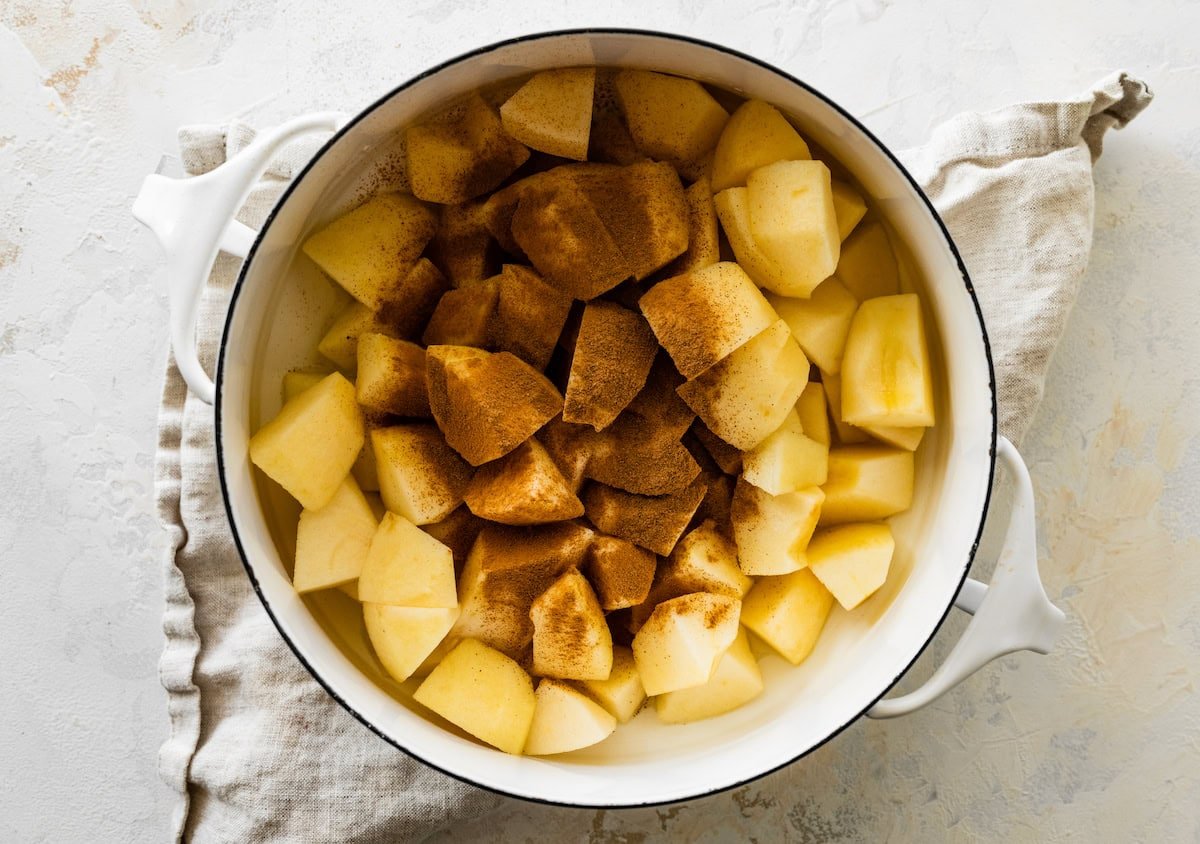
Step 1: Add your apple chunks to a large pot with the cinnamon, if using.
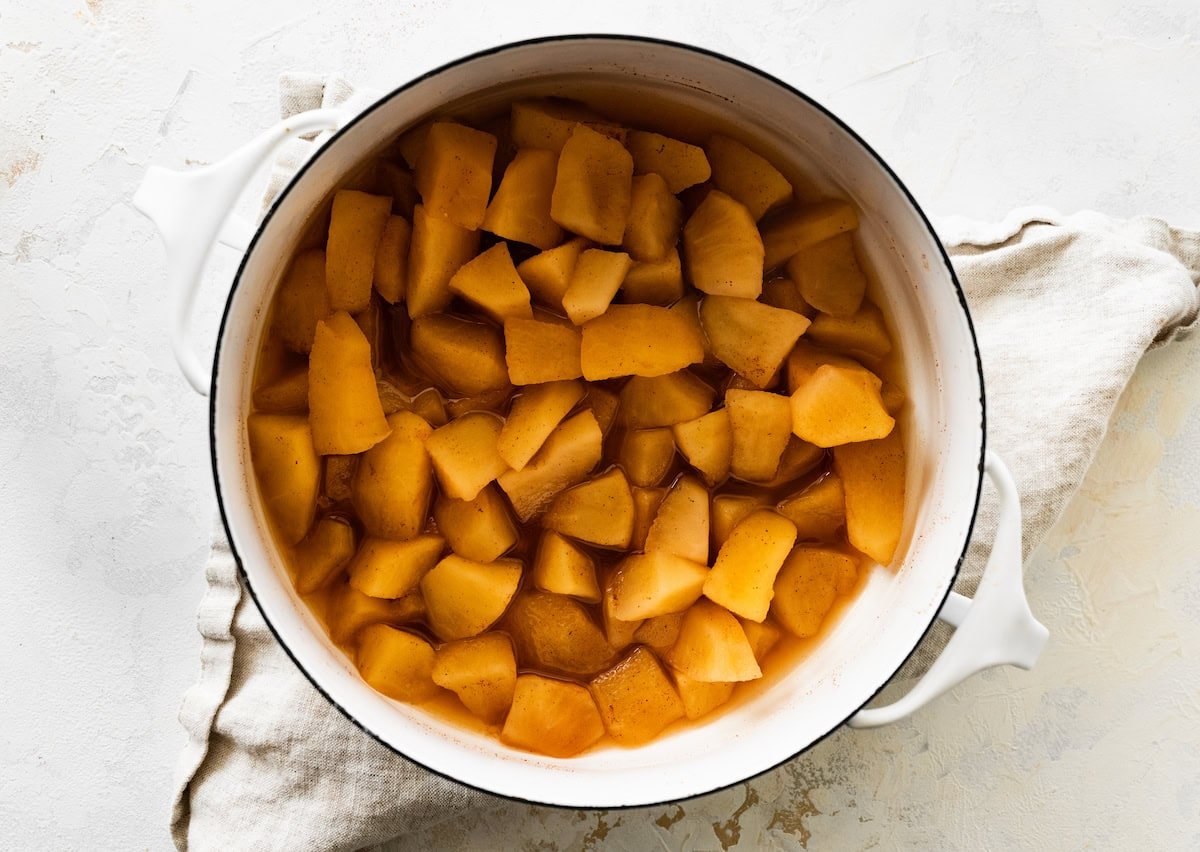
Step 2: Add water and lemon juice to the pot and place the pot over medium heat. Let simmer for 10-25 min.
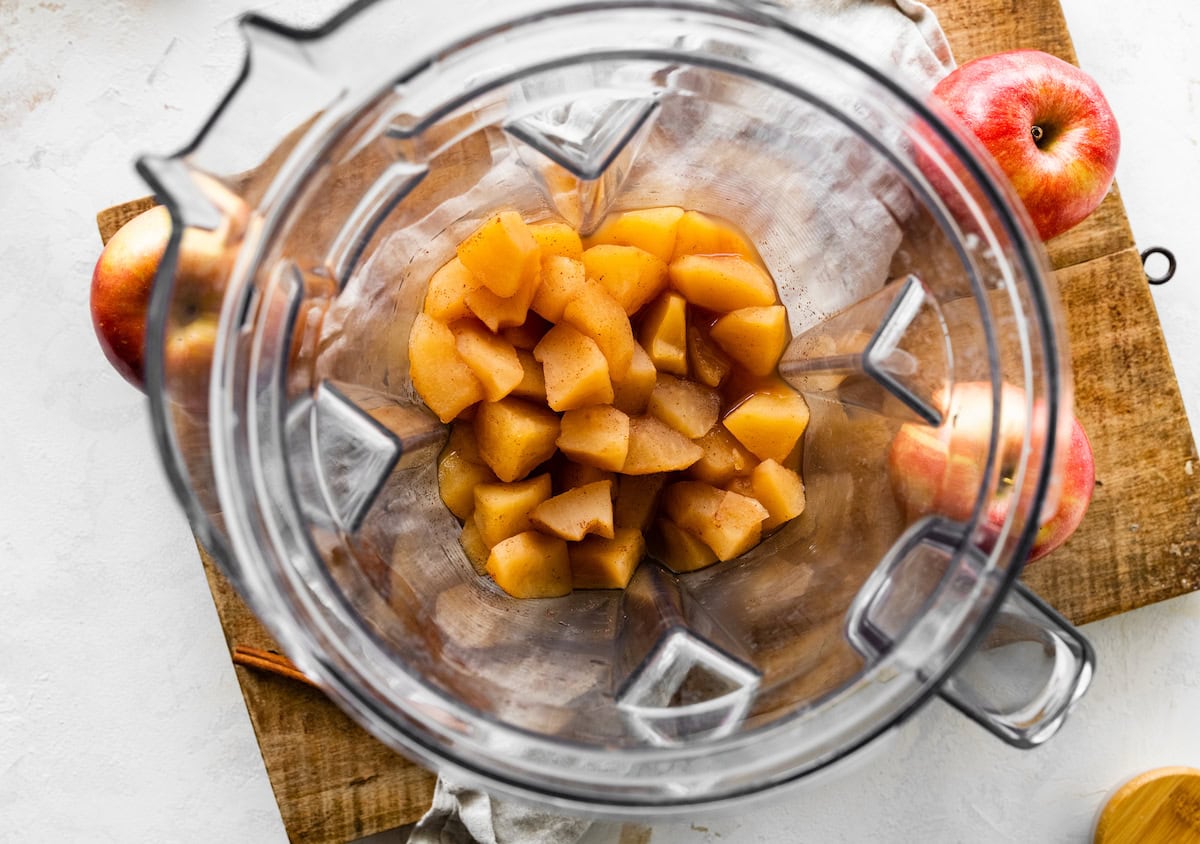
Step 3: Let the apples cool slightly, then transfer them to a blender.
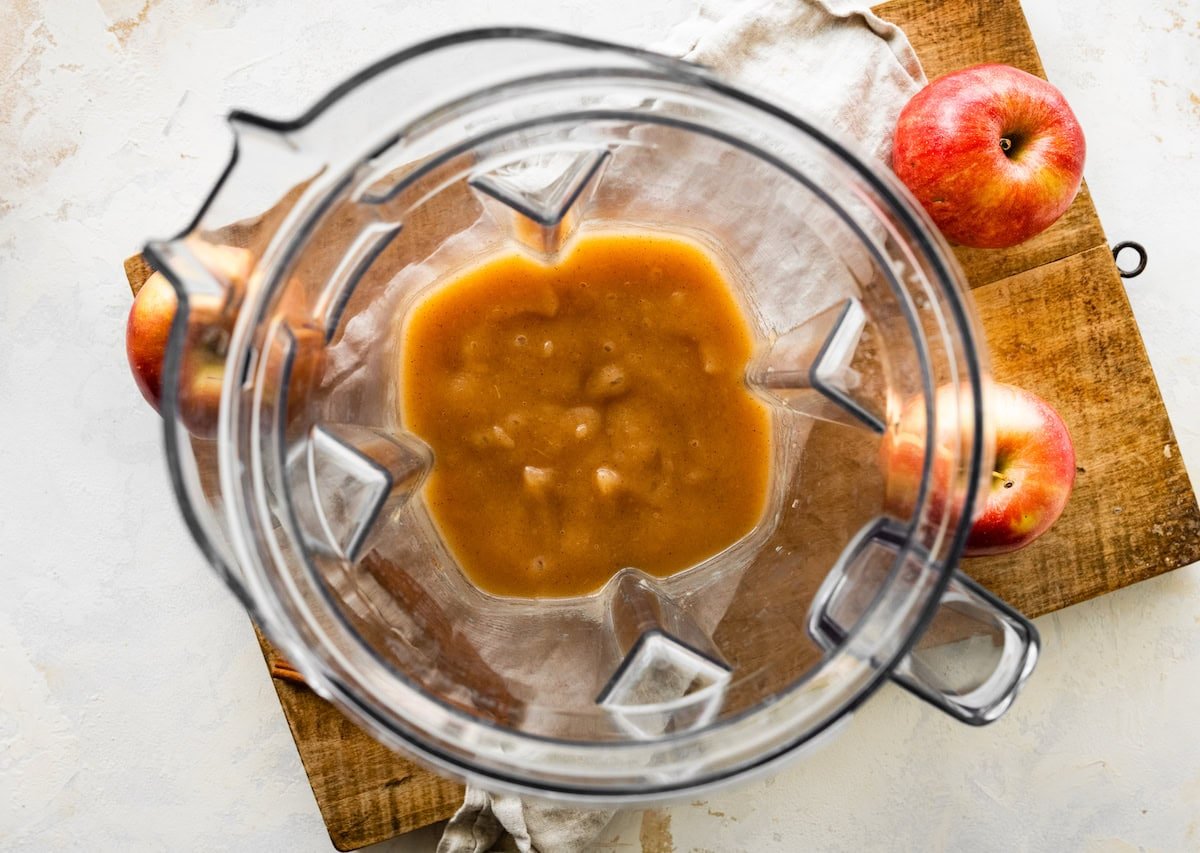
Step 4: Blend the apple mixture until smooth and enjoy or store for later use!
Brittany’s Tip!
For a chunky applesauce, use a potato masher to mash the apples until it reaches your desired consistency. For a smooth applesauce, place the apple mixture into a food processor or blender and blend until smooth. You can also use an immersion blender.
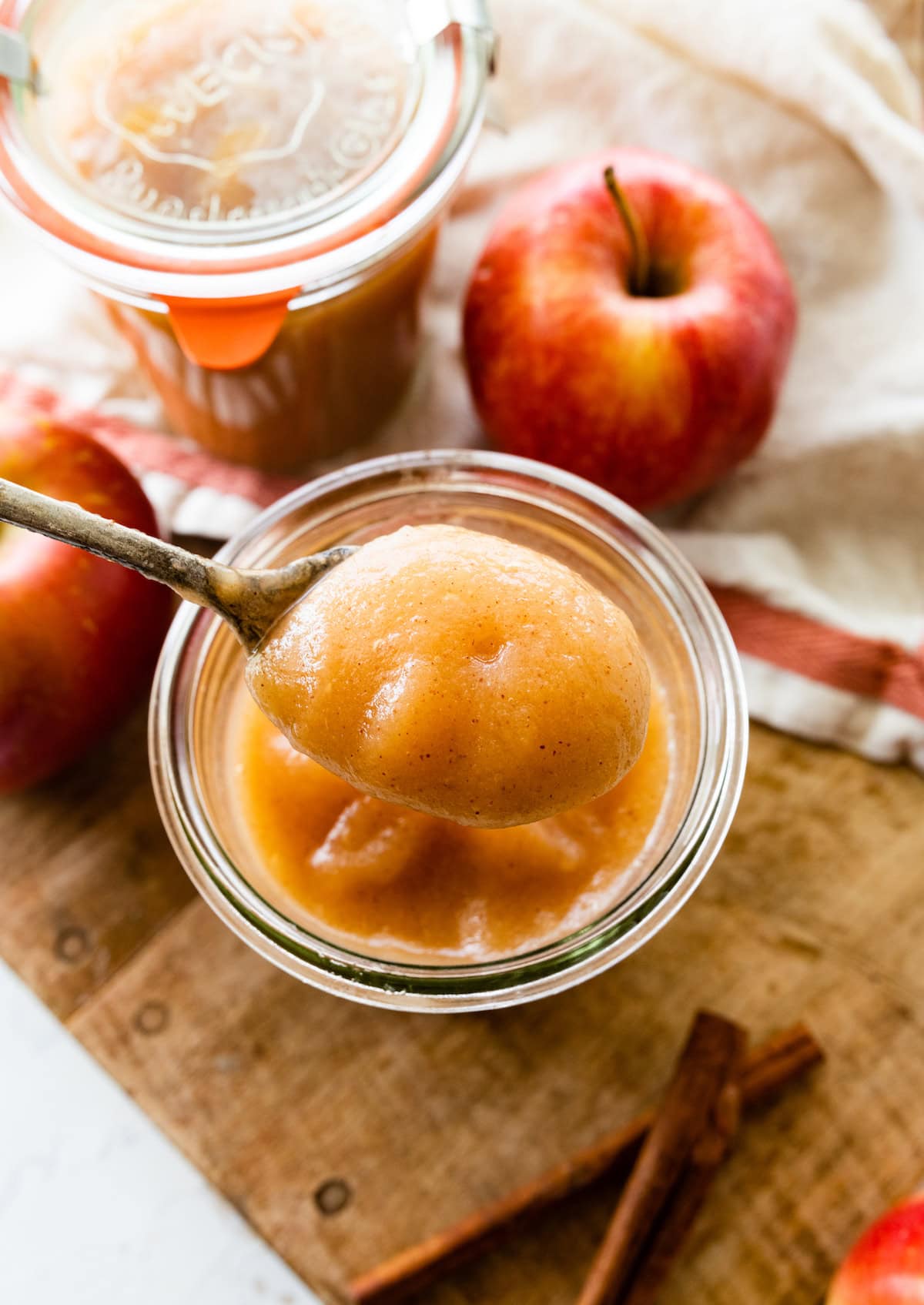
How to Use Applesauce
There are dozens of ways to enjoy applesauce! On its own with a bit of cinnamon is amazing, but you can also use it for baking and more! Here are some ideas to try:
- In baked goods – Applesauce is a fantastic substitute for oil or butter in baking, adding moisture and a subtle sweetness. Try using it in recipes like my healthy zucchini muffins or vegan apple bread. It keeps your baked goods nice and moist while cutting down on added fats.
- In a savory dish – Add applesauce to a savory dish like this cabbage soup or unstuffed cabbage rolls.
- As a topping – Spoon some of your homemade applesauce over a warm bowl of my cinnamon raisin oatmeal, yogurt bowls or almond flour pancakes for a naturally sweet and fruity topping.
- In smoothies – Blend a scoop of applesauce into your favorite smoothie for an extra dose of fruit. It works well with ingredients like spinach, nut butter and frozen berries. Try adding it to the peanut butter green smoothie.
- As a snack – Enjoy your applesauce on its own as a healthy snack, or pair it with a handful of my homemade granola for some added crunch!
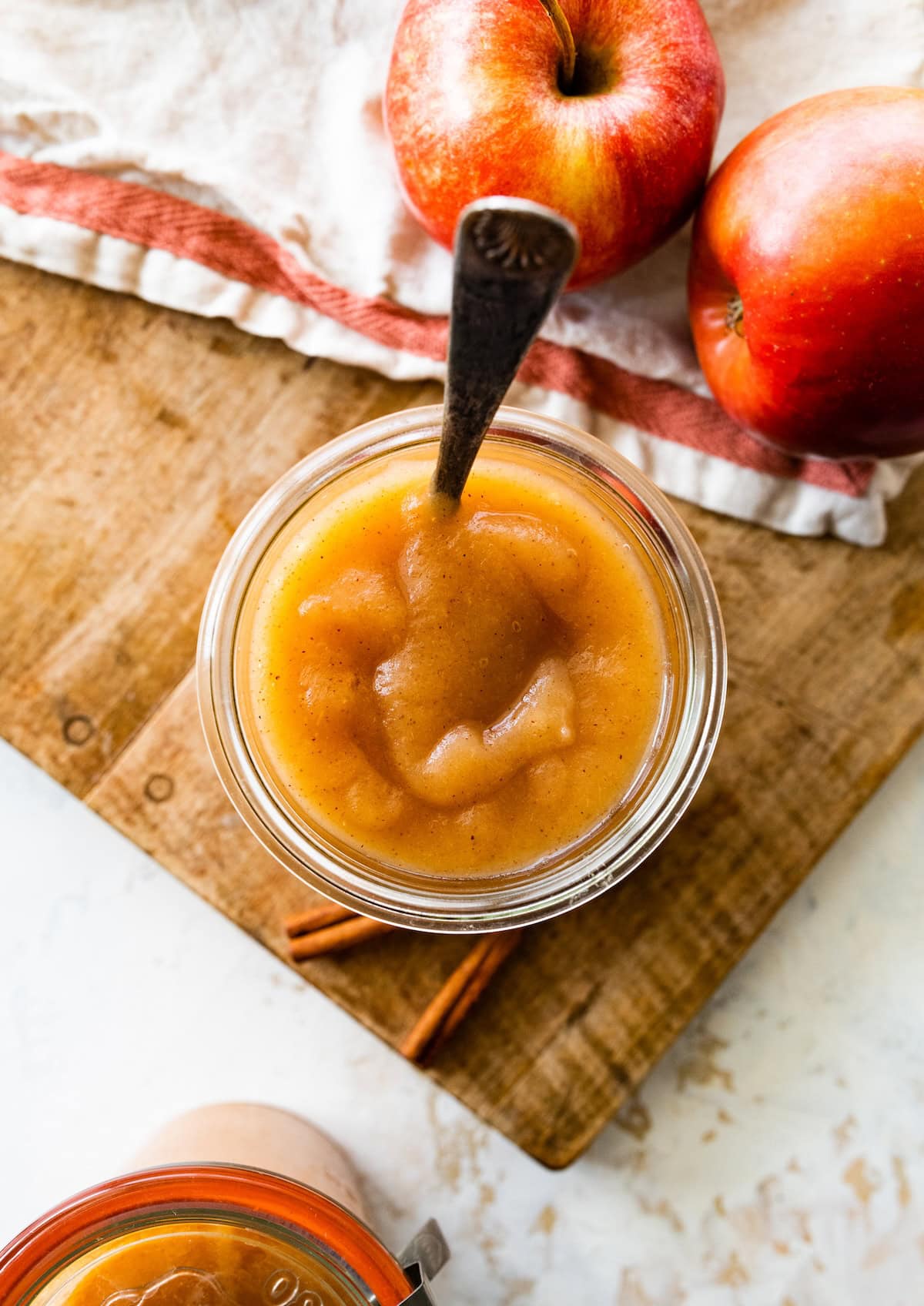
How to Store Homemade Applesauce
Let your homemade applesauce cool before placing in an airtight container and store in the refrigerator for up to one week.
If you’re making a big batch, consider freezing some for later. Applesauce freezes well and can be a quick and healthy snack or addition to recipes. Just be sure to leave some space in your containers, as the sauce will expand when frozen. Applesauce will be good for up to 3 months in the freezer. To thaw, place it in the fridge overnight before using.
Frequently Asked Questions
You can use whatever apples you have on hand for this homemade applesauce! I typically like to use sweeter varieties like Honeycrisp, Fuji, Gala, Braeburn or Golden Delicious or I’ll to a combination of sweet and tart varieties. Popular tart varieties include Granny Smith, Pink Lady and McIntosh.
Yes! I’ve made this applesauce in the slow cooker before and it turned out awesome. Just add all your ingredients and cook on high for 3-4 hours or low for about 6 hours or until your apples are soft and mashable.
I like to peel my apples for a smoother consistency, but you can definitely leave the peels on if you prefer or are short on time. Just give them a good wash before chopping!
I know what you might be wondering… how is this recipe different than my apple butter recipe? Let me explain!
Both apple butter and applesauce are made by cooking apples with water, spices AND sugar (but I make mine without added sugar). The main difference between the two is that apple butter is cooked longer so the mixture becomes a thick, caramelized consistency. Applesauce is soft and creamy too, but is typically a thinner, lighter consistency. The other difference is that apple butter is usually made with an array of spices like cinnamon, cloves, nutmeg and vanilla. Occasionally you’ll see cinnamon applesauce, but most of the time applesauce is plain.
More Apple Recipes
If you enjoyed this recipe, please consider leaving a ⭐ star rating and let me know how it went in the 📝 comments below.
-
In a large saucepan over medium heat, combine apples, water, cinnamon and lemon juice. Bring to a boil, reduce heat, and simmer for 10-25 minutes, depending on the size of your apples. You’ll know they’re ready when the apples are soft and have lost their shape.
-
Remove the apples from the heat and allow to cool slightly. For a chunky applesauce: use a potato masher to mash the apples. For a smooth applesauce: place cooked apples in a food processor or high-powered blender and blend until smooth. You can also use an immersion blender.
-
Store in an airtight container in the refrigerator for up to one week or in the freezer for up to 3 months.
- Slow cooker applesauce: Just add all your ingredients and cook on high for 3-4 hours or low for about 6 hours or until your apples are soft and mashable. Then blend or mash as desired!
Serving: 1/2 cup | Calories: 82kcal | Carbohydrates: 22g | Sodium: 1mg | Fiber: 5g | Sugar: 16g
Nutrition information is automatically calculated, so should only be used as an approximation.
